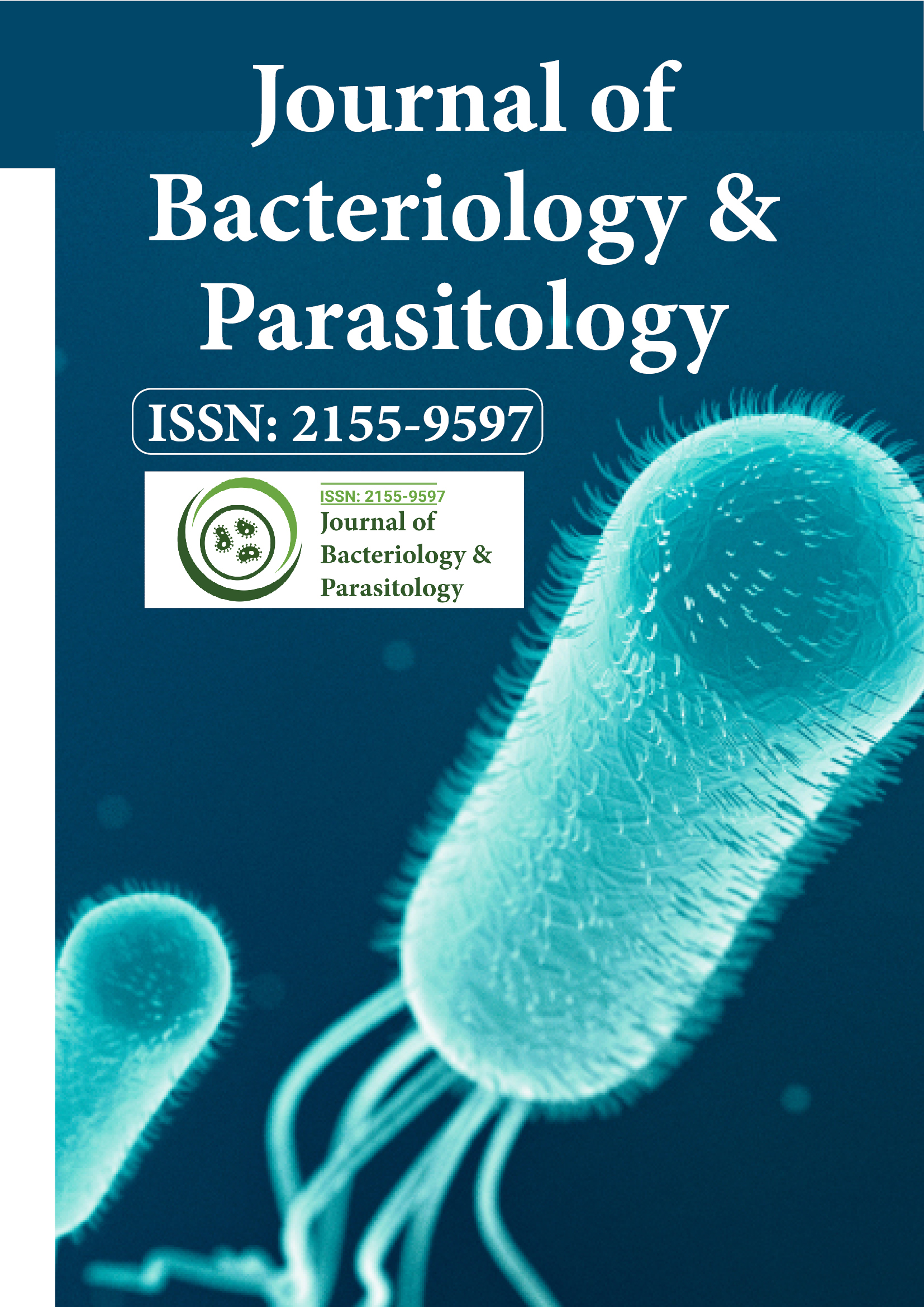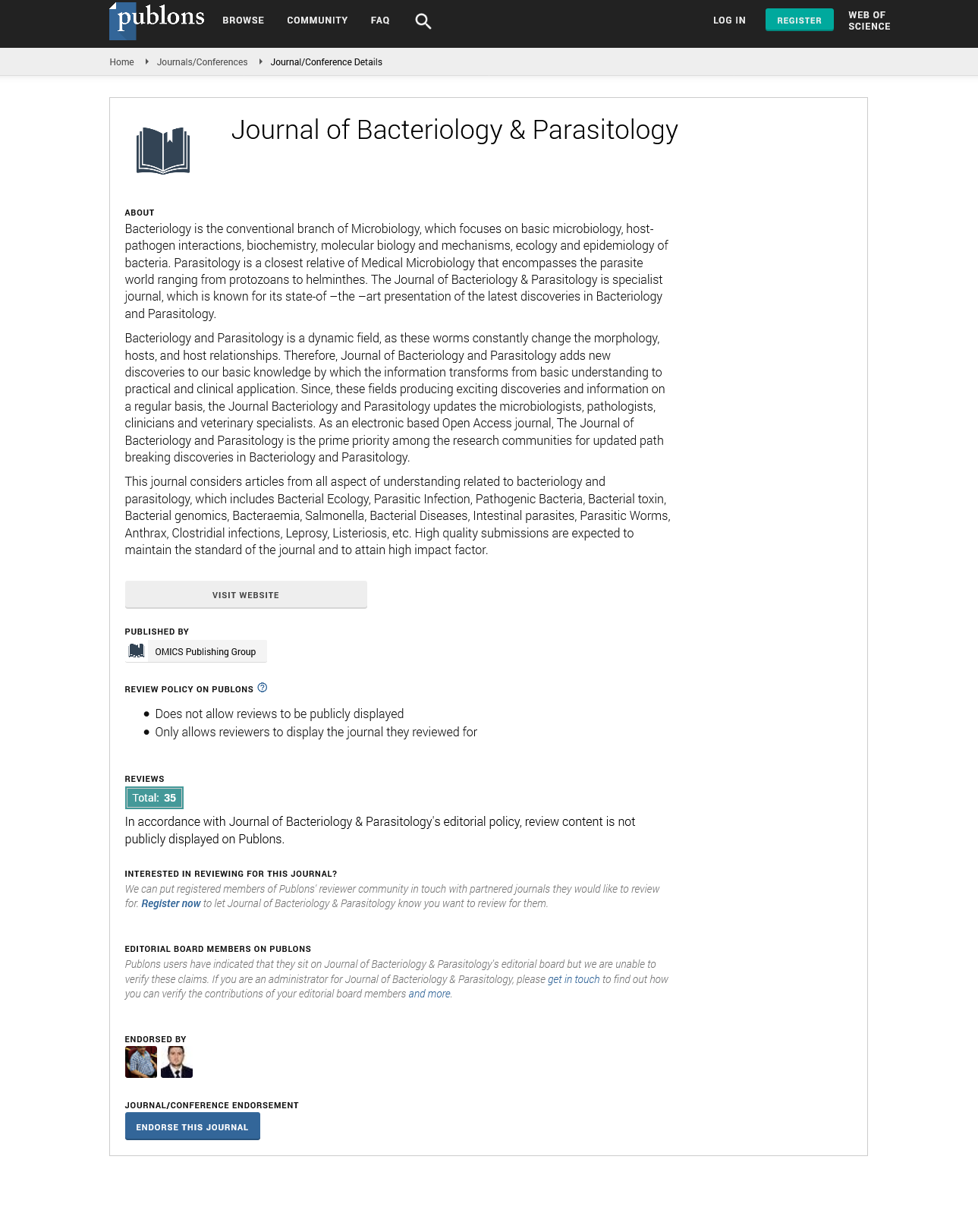Indexed In
- Open J Gate
- Genamics JournalSeek
- Academic Keys
- JournalTOCs
- ResearchBible
- Ulrich's Periodicals Directory
- Access to Global Online Research in Agriculture (AGORA)
- Electronic Journals Library
- RefSeek
- Hamdard University
- EBSCO A-Z
- OCLC- WorldCat
- SWB online catalog
- Virtual Library of Biology (vifabio)
- Publons
- MIAR
- Geneva Foundation for Medical Education and Research
- Euro Pub
- Google Scholar
Useful Links
Share This Page
Journal Flyer

Open Access Journals
- Agri and Aquaculture
- Biochemistry
- Bioinformatics & Systems Biology
- Business & Management
- Chemistry
- Clinical Sciences
- Engineering
- Food & Nutrition
- General Science
- Genetics & Molecular Biology
- Immunology & Microbiology
- Medical Sciences
- Neuroscience & Psychology
- Nursing & Health Care
- Pharmaceutical Sciences
Perspective - (2025) Volume 16, Issue 2
Microbial Agents and Host Interaction in Gastrointestinal Bacterial Infections
Maria Stevens*Received: 24-Mar-2025, Manuscript No. JBP-25-29947; Editor assigned: 26-Mar-2025, Pre QC No. JBP-25-29947; Reviewed: 09-Apr-2025, QC No. JBP-25-29947; Revised: 16-Apr-2025, Manuscript No. JBP-25-29947; Published: 28-Apr-2025, DOI: 10.35248/2155-9597.25.16.541
Description
A multitude of bacterial organisms reside along the human digestive tract. Some maintain harmony with the host, performing beneficial functions; others cause illness when environmental or immunological balance shifts. The relationships between bacterial agents and human cells underlie many symptoms that range from mild discomfort to lifeâ?threatening conditions. Among organisms that produce disease in the gut are species of Escherichia coli, Salmonella, Shigella and Campylobacter. Each exhibits modes of invasion or toxin production that damage the intestinal lining or subvert immune responses. E. coli strains may produce enterotoxins that cause secretory diarrhea, while invasive Salmonella penetrate epithelial cells and stimulate inflammatory responses that lead to fever and abdominal pain. Shigella uses a mechanism to move from one cell to another, evading immune clearance and causing cell death.
Host defenses include acidity in the stomach, peristaltic movement that flushes contents downstream, mucus that protects epithelial surfaces, secreted antimicrobial peptides and resident immune cells. When any of these features are compromised such as through malnutrition, prior infection, or antibiotic use, pathogens find opportunities for colonization. For instance, reduced stomach acidity may allow Salmonella to survive the upper digestive tract. Meanwhile, antibiotics may kill benign species normally present, allowing resistant bacterial strains to expand without competition.
Diagnosis of gastrointestinal bacterial infection demands culture methods, molecular identification of virulence genes, and sometimes direct detection of toxins. Treatment often involves hydration to correct fluid loss, antibiotics targeted to the pathogen’s susceptibility profile, and supportive care. However, antibiotic resistance is growing: some strains of Campylobacter resist fluoroquinolones; certain Salmonella fail to respond to firstâ?line drugs. Thus, careful laboratory testing is required before prescribing treatment of long duration. Public health measures such as improved sanitation, safe drinking water, and education about food handling play major roles in reducing incidence.
Research into bacterial factors that permit survival under harsh conditions reveals adaptation mechanisms like acid resistance systems, biofilm formation which protects cells from immune attack or environmental stress, and secretion systems that inject effector molecules into host cells. These systems perform not only in disease settings but also when bacteria navigate ecological niches outside the host. For example, Salmonella employs a typeâ?III secretion system to deliver proteins that manipulate host cell structure and immune signaling. Biofilms formed by Shigella shield them from bactericidal agents and facilitate persistent infection in the gut or on medical devices.
Epidemiological surveillance shows that outbreaks often follow contamination of water or food supplies. Raw or undercooked meats, unpasteurized dairy, contaminated fruits and vegetables are frequent sources. International travel contributes to spread of bacterial gastroenteritis, particularly when visitors consume local foods or water without caution. Tracking outbreak sources via genetic fingerprinting enables public health agencies to trace origins and issue warnings. Implementation of multiple layers of prevention makes the difference between occasional infection and sustained control of bacterial gastrointestinal disease.
Conclusion
Prevention includes vaccination where available, safe food preparation practices, supply of clean water, and hand hygiene. Vaccines for Salmonella Typhi or Cholera, though not always targeting all strains, reduce disease burden when used with other control efforts. Antimicrobial stewardship programs aim to preserve drug efficacy by avoiding overuse in agriculture and medicine. Overall, understanding how bacterial agents interact with host defenses paves progress toward reducing disease burden. Continuous monitoring of resistance patterns, studying bacterial survival strategies, and reinforcing sanitary infrastructure all combine to improve health outcomes.
Citation: Stevens M (2025). Microbial Agents and Host Interaction in Gastrointestinal Bacterial Infections. J Bacteriol Parasitol. 16:541.
Copyright: © 2025 Stevens M. This is an open-access article distributed under the terms of the Creative Commons Attribution License, which permits unrestricted use, distribution and reproduction in any medium, provided the original author and source are credited.

